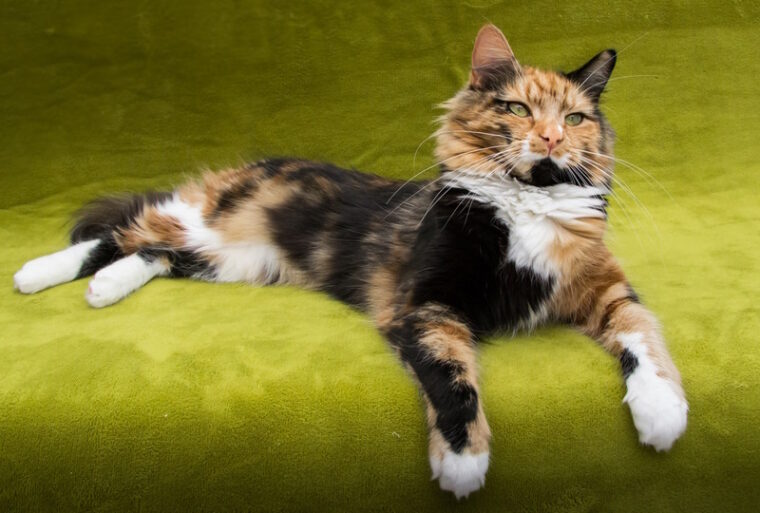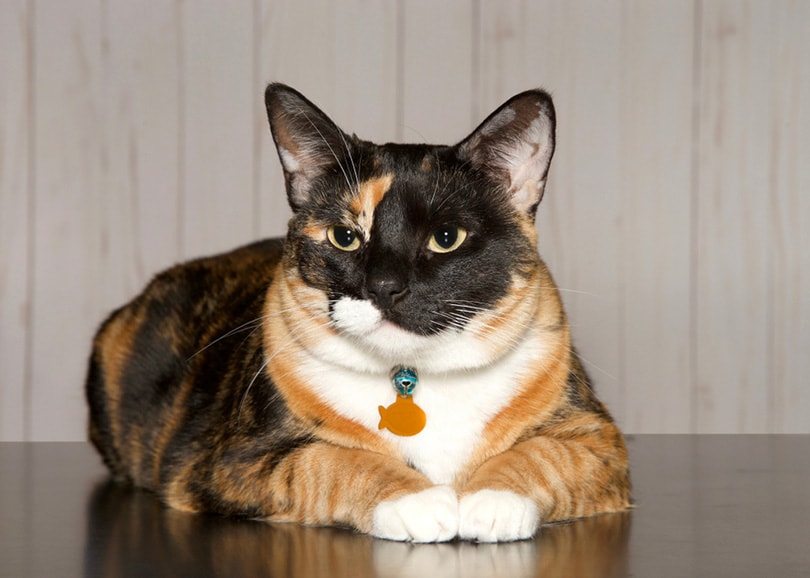
Calico cats are beautiful and loving cats that have a striking tri-color appearance. This is not a specific breed of cat but rather a color form that can appear in several different cat breeds. The calico is a domesticated breed of cat that can be found worldwide and has become increasingly popular due to its unique colorations and gentle temperament.
This patterned cat has a fascinating history and origin behind its attractive appearance, and this article will provide you with all the information you need to know!
Where Did Calico Cats Originate From?
The exact origins of the calico cat are unknown; however, the orange mutant gene was first thought to trace back to Egypt. It is then believed that this cat was brought to the Mediterranean to ports located in France, Spain, and Italy.
The patches on the calico cat came into existence after it was discovered by Neil Todd in a study on the migration of domesticated cats along the trade routes in Northern Africa and Europe.

The History Behind the Calico’s Coloration
All calico cats have three different color variations in their fur, primarily orange, black, and white. Calicos are commonly compared to the popular tortoiseshell cat, however, these two cats are not the same.
Tortoiseshell cats are like calicos because they both have a pattern of orange and black, whereas calico cats have a white coat with patterns of orange and black, and tortoiseshells have a brownish coat. However, outside of North America, the calico is often referred to as a tortoiseshell with white coloration.
The name used to describe this cat’s coloration was derived from a type of fabric that was crafted in India. When the calico fabric arrived in the United States, the language barrier caused some confusion as to whether the word “calico” referred to the pattern of the fabric and not the material itself. However, this word has since become a popular name to refer to the mottled pattern of colors, which is why it is now used as a name for this cat coloration.
Why Are Most Calico Cats Female?
Most calico cats are female because the genetics present in calico cats are linked to the X chromosome. Calico cats are almost always female because one color is linked to the maternal X chromosome, and the second color is linked to the paternal X chromosome.
Rare male calico cats are usually born sterile because of chromosome abnormality, which is why most breeders will reject any males for breeding purposes. Male calico cats are the result of an abnormality, and infertility issues are the result of Klinefelter syndrome.
Back in the 1940s, some of the first official studies conducted into the calico cats’ genetics found that there was an abnormality in the nerve cells, which was not observed in our standard-colored domesticated cats. The nuclei of female calico cats were significantly bigger and were named “Barr bodies” after the scientist and his team who first discovered the oddly shaped “drum stick” nuclei.
A decade later, Japanese biologists took an interest in this cat’s unique gender significance and summarized that these “drum stick” nuclei were tightly coiled X chromosomes that were not able to be used by the cell. This new revelation was then used to develop the X-inactivation concept, which is when one of the two female X chromosomes is unable to work, which then results in the calico coloration.

 Top Historical Facts About the Calico Cat
Top Historical Facts About the Calico Cat
Conclusion
The calico is an interesting and attractive cat that has a long history. Fortunately, these cats are associated with positivity and luck throughout history and now make adoring domesticated companions that come in a variety of different patterns, breeds, and eye colors. If you happen to own a cat with a stunning calico coloration, consider yourself lucky!
Featured Image Credit: Bianka Kovacs, Shutterstock







